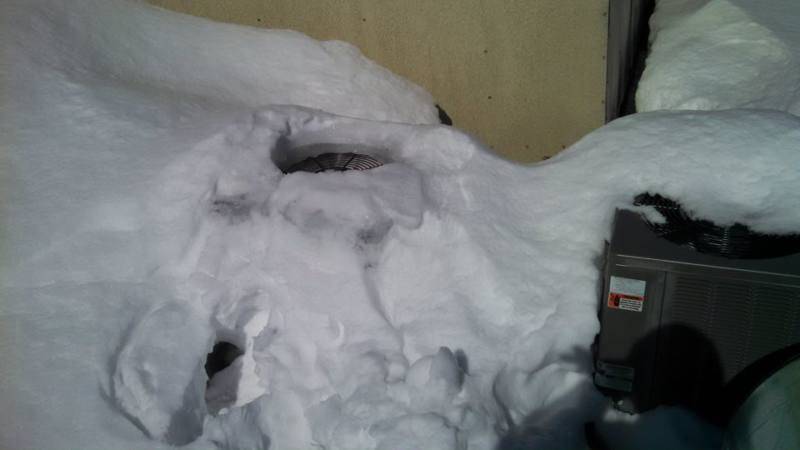How To Protect Your HVAC Units from Snow and Ice This Winter
New Englanders can’t help but cringe when we think about the brutal winters we’ve endured in years past. 2014 was an especially rough year for HVAC units and HVAC technicians. For our techs, winter meant shoveling their way across rooftops to dig out condensers and rooftop units that had been smothered by many feet of snow. Fortunately, all our techs stayed safe and kept all of their fingers and toes! The HVAC units were not all quite so lucky – at least one unit met its death by being impaled by a giant icicle!
Have Questions? Call Us Today At 508.763.3738

With weather experts predicting another snowy winter, it’s a good time to talk about winter weather care for your HVAC units. HVAC units are built to withstand the snow and ice, but every unit has its limits. An HVAC unit requires air flow to work properly. A unit that looks like a giant igloo encased in an ice cube will not work properly and can sustain damage if it operates in that condition. (By the way, this is true for units that are covered in leaves, shrubs and ivy too – make sure you keep the area around your units clear year-round so that they can breathe and function properly.)
Generally rooftop units do pretty well on their own. Last winter was an exception to this due to the heavy volume of the snow that built up high on rooftops, or drifted to ridiculous heights. Hopefully we will not have blizzard after blizzard like last year, so that rooftop units can take care of themselves. However if you have heat pump units, you need to take extra care. Even a foot or two of snow can cause problems for your heat pumps.
Have Questions? Call Us Today At 508.763.3738
If you’re thinking to yourself, “How do I know if I have a heat pump?” don’t be embarrassed, it can be really hard to tell by just looking at your unit. The heat pumps we have in our office, look just like a gas-fired furnaces with a cooling coil attached. Same basic shape, same basic size. The only difference is our units don’t have a burner, so they are not furnaces. Other heat pump systems look EXACTLY like an air conditioner, but include a reversing valve to allow it to essentially operate in reverse and heat in the winter and cool in the summer. Quick rules of thumb: if your condensing unit (outdoor unit) runs when it’s cold out, you probably have a heat pump. Or if you have baseboard heat, you do not have a heat pump. If you’re not sure, just ask your HVAC contractor.
Have Questions? Call Us Today At 508.763.3738

Keeping your condenser clear of snow is important. However, when shoveling out your condenser, USE CAUTION. Try not to actually touch the condenser with the shovel, or cause the snow to smoosh into the sides of the unit. You’ll notice that a condenser has a series of delicate-looking fins, some protected by a metal grid, some not. These fins are how the condenser transfers heat. These fins need to be clean, clear of debris/snow/etc. and undamaged in order to work. So no smashing the coils with a shovel, OK?
Many heat pumps use electric heating coils for backup or supplementary heat. The electric heat automatically kicks on any time the heat pump can’t produce enough heat. Because you’re getting heat, you may not realize that your heat pump has actually stopped working. At least not until you get your electric bill. Ouch! After any significant snow storm, we recommend visually checking your condenser to make sure it’s clear of snow and undamaged. This will help prevent sticker shock on your electric bill as well as make sure that your heat pump stays healthy through the winter.
Hopefully winter will be kind this year and your heat pumps will be happily snow-free all year. But if Mother Nature decides to blanket us in the white stuff, now you’ll know what to do!

